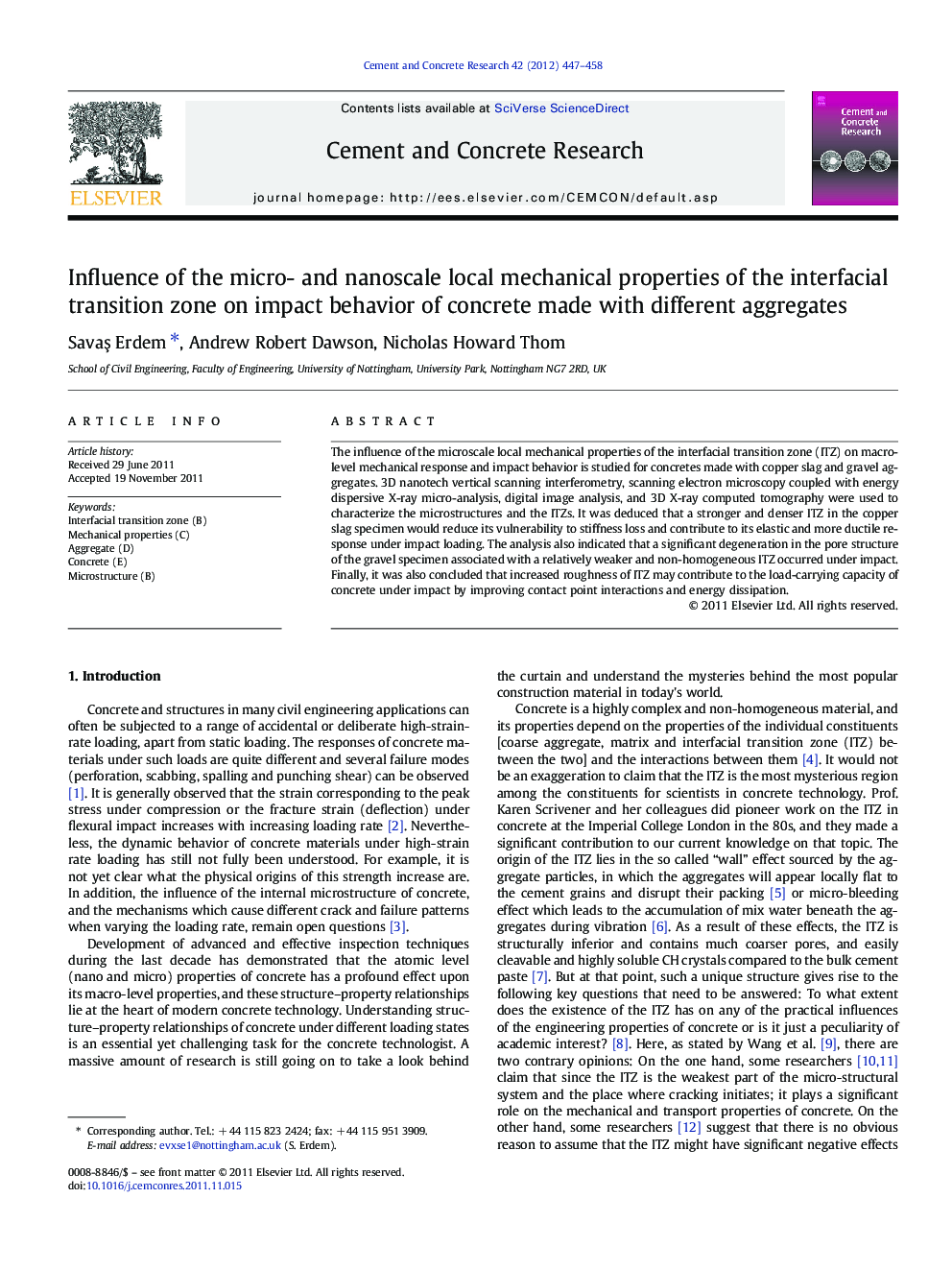| Article ID | Journal | Published Year | Pages | File Type |
|---|---|---|---|---|
| 1456801 | Cement and Concrete Research | 2012 | 12 Pages |
The influence of the microscale local mechanical properties of the interfacial transition zone (ITZ) on macro-level mechanical response and impact behavior is studied for concretes made with copper slag and gravel aggregates. 3D nanotech vertical scanning interferometry, scanning electron microscopy coupled with energy dispersive X-ray micro-analysis, digital image analysis, and 3D X-ray computed tomography were used to characterize the microstructures and the ITZs. It was deduced that a stronger and denser ITZ in the copper slag specimen would reduce its vulnerability to stiffness loss and contribute to its elastic and more ductile response under impact loading. The analysis also indicated that a significant degeneration in the pore structure of the gravel specimen associated with a relatively weaker and non-homogeneous ITZ occurred under impact. Finally, it was also concluded that increased roughness of ITZ may contribute to the load-carrying capacity of concrete under impact by improving contact point interactions and energy dissipation.
